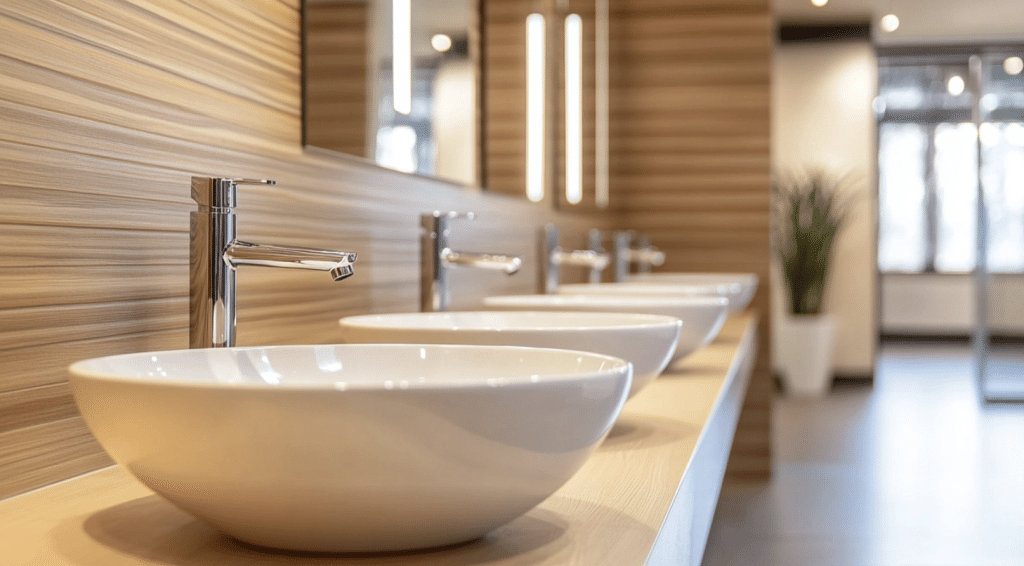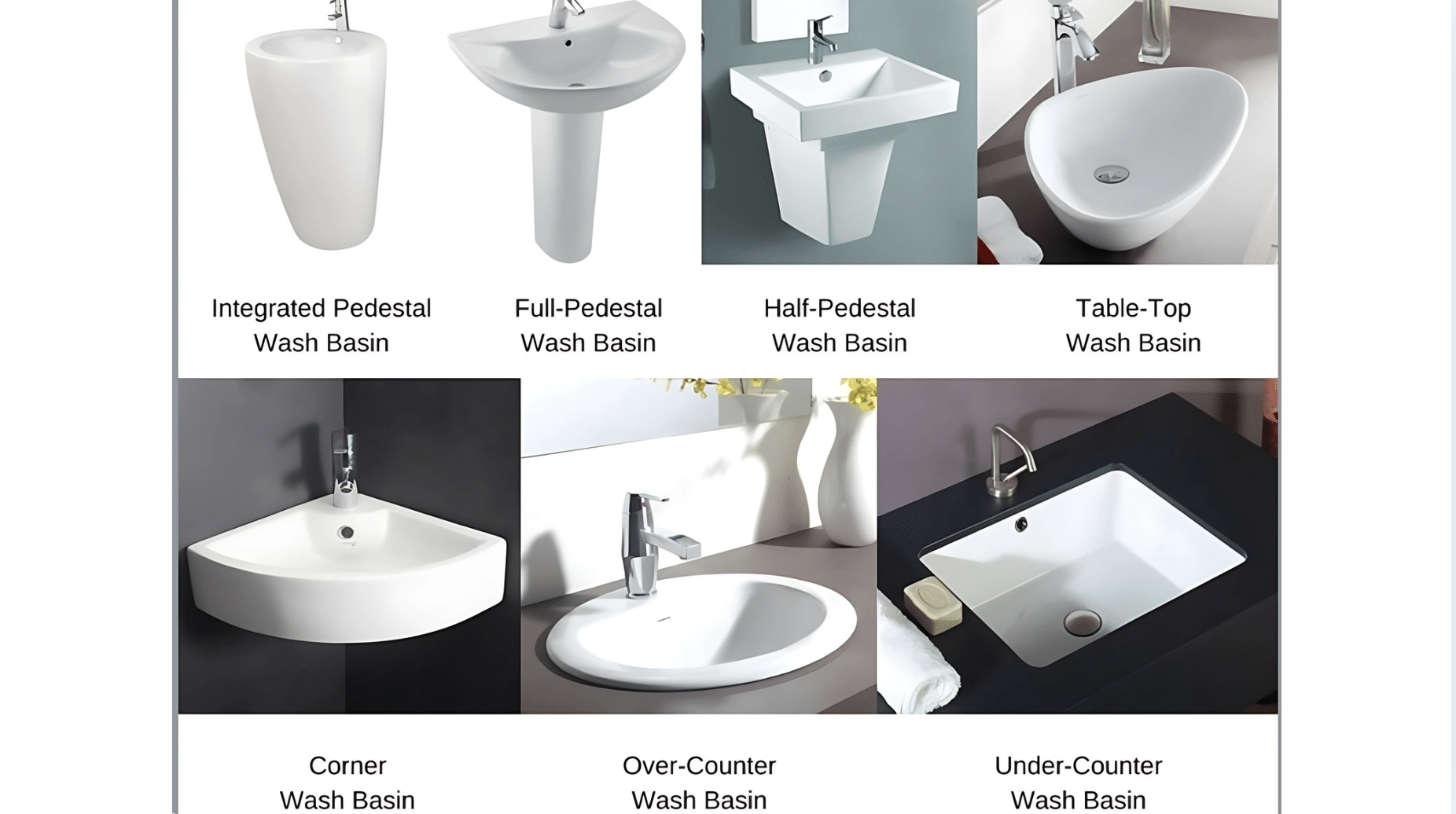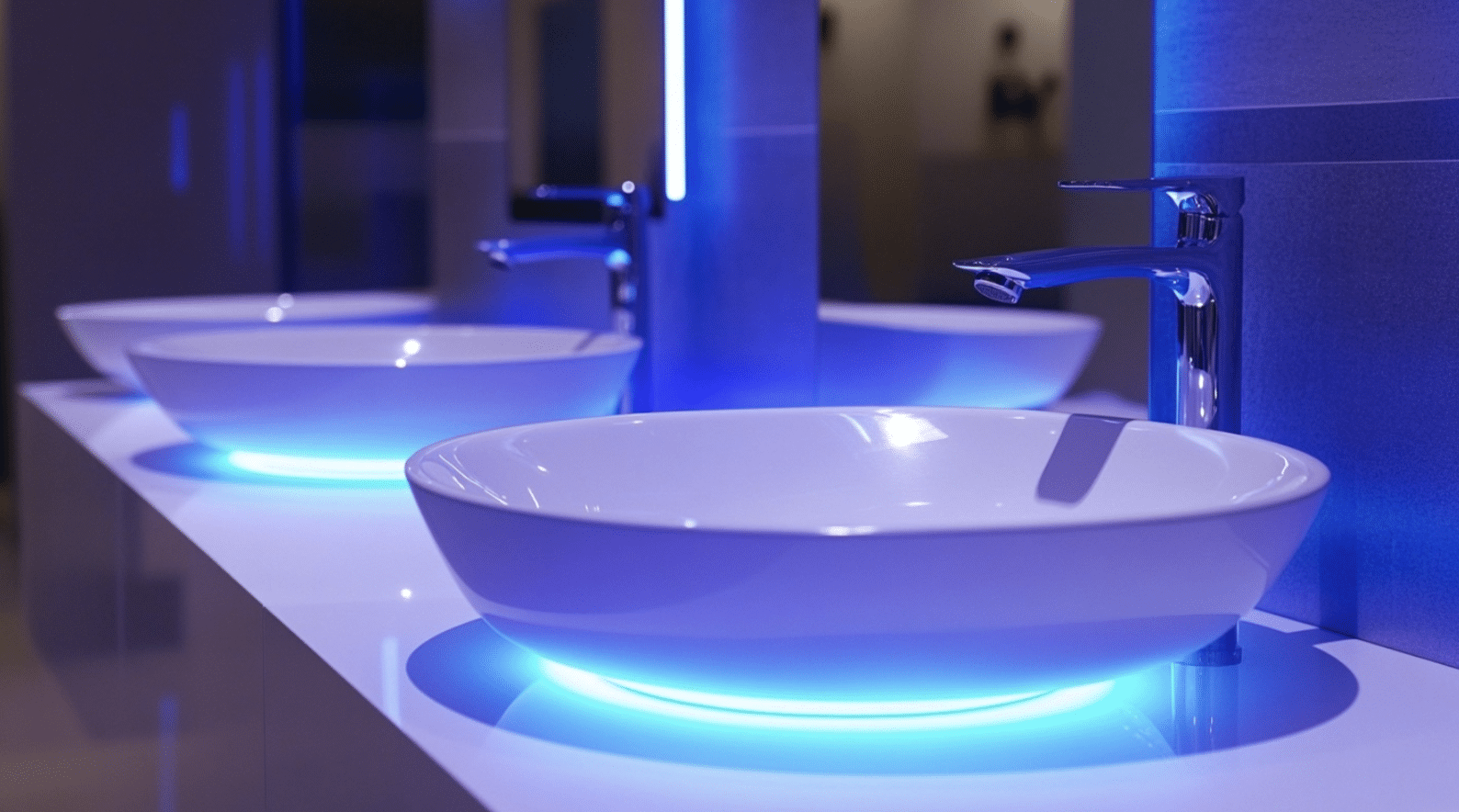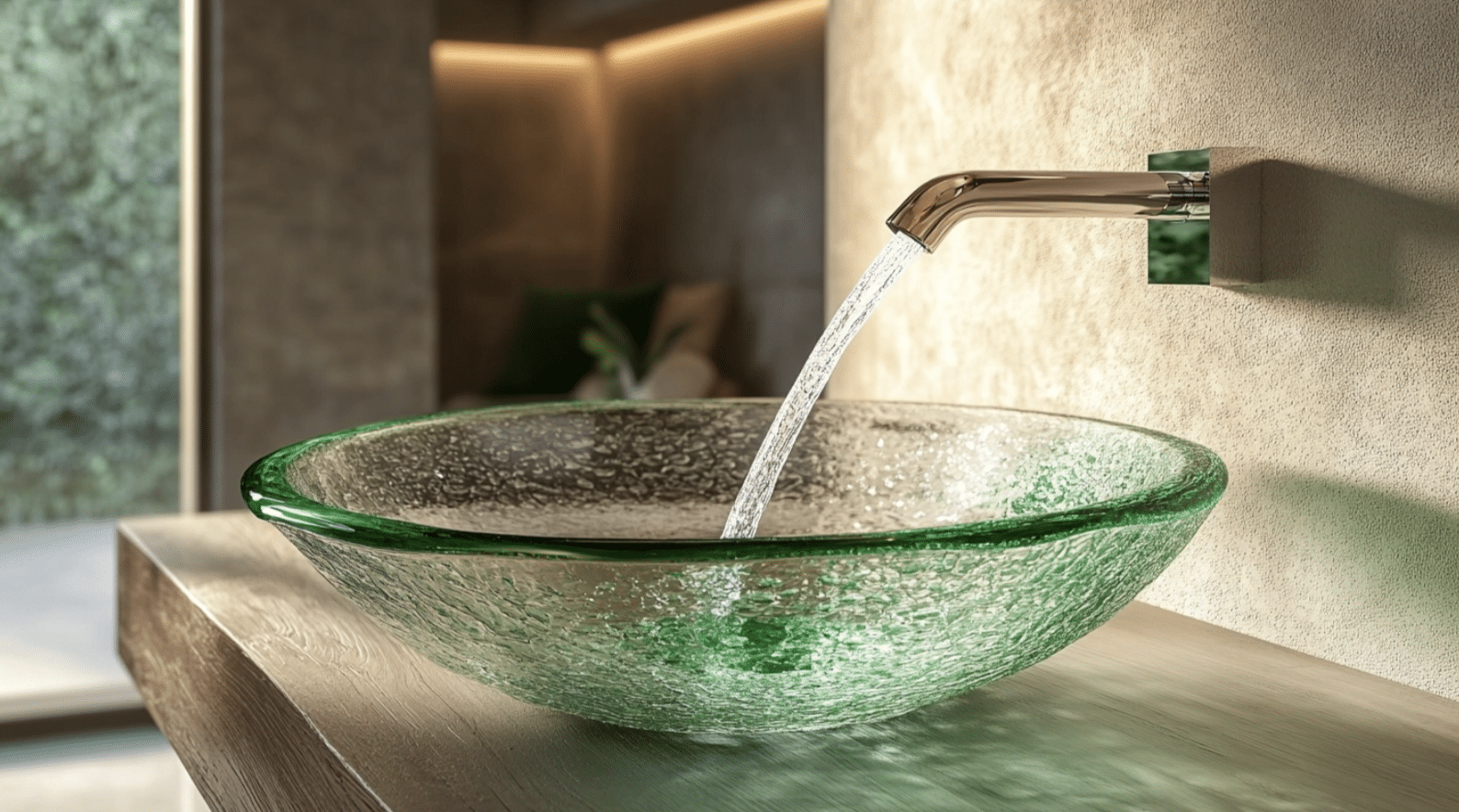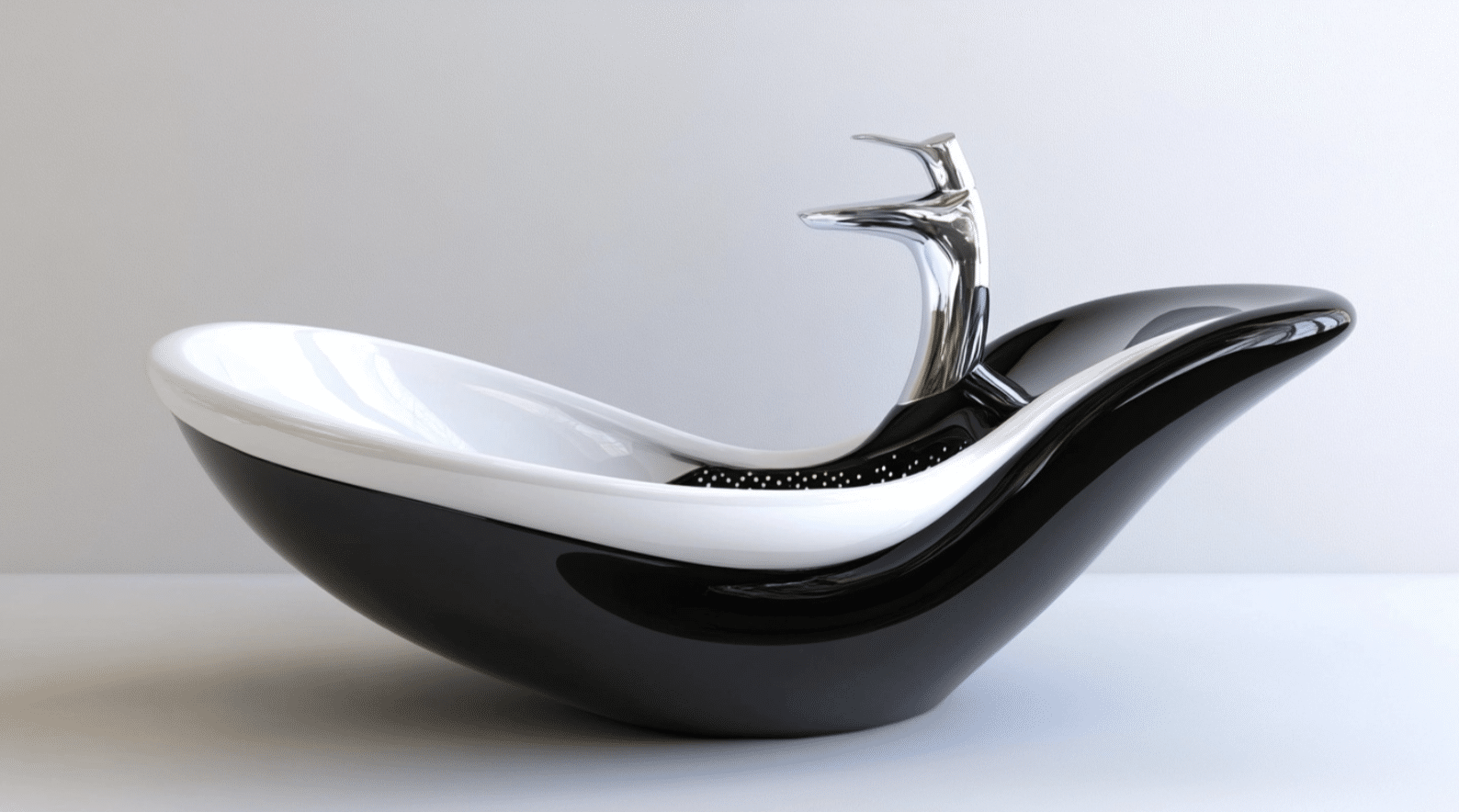Do you struggle to find the perfect washbasin for your bathroom? A well-chosen basin can make or break your daily routine. Every day, we spend time at our washbasins, yet many homes have fixtures that don’t fit their needs or style.
You can find a basin that works perfectly for your space and habits. This guide will show you how to pick a washbasin that matches your bathroom size, fits your daily use, and stays within your budget.
Read on to learn about washbasin types, materials, and smart features. By the end, you’ll know exactly what to look for when shopping for this key bathroom fixture. Find a basin that makes your morning routine better!
What Is a Washbasin?
A washbasin is a bowl-shaped fixture used for washing hands, face, and small items. Often found in bathrooms and kitchens, these fixtures have been part of homes for many years.
The first basins were simple bowls that people filled with water. Today’s washbasins come in many shapes and sizes with pipes for water flow.
Common Uses
Washbasins serve a variety of everyday personal hygiene purposes, including:
-
Handwashing: The primary and most frequent use.
-
Face washing and grooming: Includes activities like shaving and brushing teeth.
-
Quick cleaning tasks: Such as rinsing items or wetting cloths.
-
Medical or caregiving hygiene: In healthcare or assisted living environments.
-
Pre-wash station: In some kitchens or utility areas.
They are found in residential bathrooms, commercial restrooms, hotels, hospitals, and even outdoor garden areas.
Materials Used
Washbasins are made from a variety of materials, each offering unique aesthetics, durability, and maintenance requirements. Here are the most common ones:
-
Ceramic (Vitreous China): The most popular material, known for its smooth, non-porous surface, ease of cleaning, and affordability.
-
Porcelain: A type of ceramic, usually denser and finer, offering a luxurious, glossy finish and strong resistance to stains and wear.
-
Stone (Marble, Granite, etc.): Adds a natural, upscale feel. Durable but requires sealing to prevent staining and water absorption.
-
Glass: Tempered for strength; often used in modern or decorative settings. Requires regular cleaning to prevent water spots.
-
Metal (Stainless Steel, Copper, Bronze): Durable and stylish, especially for industrial or rustic designs. Stainless steel is common in utility areas; copper and bronze are more decorative and develop a patina over time.
-
Resin/Artificial Stone (Solid Surface): Offers a seamless appearance, available in a variety of shapes and finishes, and can be easily molded and repaired.
Each material suits different aesthetic preferences, maintenance habits, and budget levels, making material choice a crucial part of washbasin selection.
Types of Washbasins
1. Wall-mounted Basins
Wall-mounted basins attach directly to the wall without support from below. These basins hang from the wall with no cabinet or pedestal beneath. The pipes often stay visible unless hidden inside the wall.
Pros: Save floor space, make cleaning the floor easier, work well in small bathrooms.
Cons: May need strong wall support, exposed pipes can look untidy.
Ideal for: Small bathrooms, powder rooms, or homes with limited space.
2. Pedestal Basins
Pedestal basins sit on a tall narrow base that hides the pipes. The column-like stand gives the basin a classic look. The basin itself sits on top of this stand.
Pros: Classic look, hide plumbing, easy to clean around.
Cons: Offer no storage space, take up more floor space than wall-mounted options.
Ideal for: Medium-sized bathrooms with classic décor, guest bathrooms.
3. Countertop/Above-counter Basins
Countertop basins sit on top of a counter or vanity unit. These basins rest fully above the counter surface. They come in many shapes like round, oval, or square.
Pros: Many style options, easy to install, create a focal point.
Cons: Can splash water onto counters, may need special tall taps.
Ideal for: Family bathrooms, master bathrooms, spaces where style matters.
4. Under-counter Basins
Under-counter basins fit below the counter level. The rim of these basins sits under the counter edge. The counter material forms the outer edge of the basin.
Pros: Easy to clean, smooth counter surface, modern look.
Cons: More complex to install, need a custom cut countertop.
Ideal for: Modern bathrooms, busy family bathrooms, any size space.
5. Semi-recessed Basins
Semi-recessed basins partly sit in and partly stick out from the counter. The front of the basin extends beyond the counter edge. The back part fits into the counter.
Pros: Work with narrow counters, allow closer standing position. Cons: Harder to find, may look odd with some counter styles. Ideal for: Bathrooms with shallow counters, medium-sized spaces.
6. Corner Basins
Corner basins fit into the corner of a room. These basins have a triangular or curved back that fits neatly into corner spaces. They often come in wall-mounted styles.
Pros: Great space-savers, use often wasted corner space.
Cons: Smaller than other basins, limited style options.
Ideal for: Very small bathrooms, powder rooms, en-suites with tight spaces.
7. Integrated/Vanity Basins
Integrated basins form part of the counter itself. The basin and counter come as one piece. Common materials include acrylic, stone resin, or solid surface.
Pros: No seams to clean, smooth look, water cannot leak between basin and counter.
Cons: Often more costly, whole unit needs replacing if damaged.
Ideal for: Family bathrooms, luxury bathrooms, spaces where ease of cleaning matters.
Factors to Consider When Choosing a Washbasin
- Size and Space- Measure your bathroom first. Small spaces need wall-mounted or corner basins. Large rooms fit pedestal or vanity types. Check width, depth, and height. Allow room to move around it.
- Material Quality- Porcelain and ceramic are easy to clean and cost less. Stone looks fancy but needs more care. Glass stands out but shows water marks. Metal lasts long but may scratch. Pick a material that fits your cleaning time.
- Style and Design- Match your bathroom’s style. Modern spaces need clean lines. Classic rooms suit curved shapes. Round basins feel soft, square ones look neat. White works with most colors, but colored basins add flair.
- Budget Planning- Set a clear price limit. Basic ceramic costs less than stone, glass, or metal. Add fitting costs too. Some basins need special taps or parts, which raises the price.
- Fitting Requirements- Some basins need expert help. Under-counter types need exact cutting. Wall-mounted ones need strong walls. Check if you need new pipes or parts.
- Daily Use Needs- Think about the users. Homes with kids need tough, easy-clean basins. Shared bathrooms may need larger sizes. People with hand issues might prefer lever taps.
- Water Flow System- Check your water pressure. Low pressure needs basins with good flow. Mixer taps need both hot and cold pipes. Some new basins may need pipe changes.
Trending Designs and Innovations in Washbasins
Modern washbasins are more than just functional—they’re a fusion of technology, sustainability, and style. Here are some of the top trends shaping contemporary bathroom spaces:
1. Smart Washbasins
Technological advancements have led to the rise of smart washbasins, featuring:
- Touchless sensors for improved hygiene and convenience.
- LED lighting for ambient glow or visual water temperature cues.
- Integrated temperature control systems for customized comfort.
These features not only elevate user experience but also promote water and energy efficiency.
2. Eco-Friendly Materials & Water-Saving Models
Sustainability is a major design priority:
- Washbasins made from recycled glass, bamboo composites, or low-impact ceramics are gaining popularity.
- Water-saving faucet aerators and low-flow plumbing designs reduce water usage without compromising performance.
These innovations align with green building standards and appeal to environmentally conscious homeowners.
3. Popular Finishes and Shapes
Design diversity is thriving with:
- Matte and textured finishes (e.g., matte black, brushed gold, stone-like textures).
- Organic and asymmetrical shapes, offering a sculptural, artistic feel.
- Continued popularity of minimalist rectangular and oval forms for sleek, modern aesthetics.
These elements let washbasins function as standout pieces in personalized, stylish bathroom interiors.
Common Washbasin Selection Mistakes and How to Avoid Them
| Mistake | Why It’s a Problem | Tip to Avoid It |
|---|---|---|
| Ignoring the size of the space | A basin too large can overwhelm a small bathroom, while a tiny one may look awkward. | Measure your space and choose a size that fits proportionately. |
| Choosing style over function | Aesthetic-only choices may lead to discomfort or impractical use. | Balance design with user comfort and practicality. |
| Overlooking maintenance needs | Some materials or shapes are harder to clean and maintain. | Consider ease of cleaning and long-term upkeep before selecting. |
| Not matching the basin with tapware | Mismatched fittings can cause water splashing or installation issues. | Ensure tap height and reach are compatible with basin design. |
Expert Tips for Making the Right Choice
- Pick a basin style that fits your bathroom’s look
- Choose colors that work with your tiles and paint
- Make sure the basin shape goes with other fixtures
- Keep the time period of your décor in mind
- Test the basin height if possible before buying
- Check the basin depth for your needs
- Make sure taps can be reached easily
- Look for smooth edges for safety
- Consider how water will flow to avoid splashing
Conclusion
Choosing the right washbasin brings both style and function to your bathroom. A good basin fits your space, matches your style, and meets your daily needs. Take time to think about size, material, and how you’ll use it.
Remember three key points when shopping for a washbasin. First, pick a basin that works with your bathroom size and style. Second, think about how you’ll use it every day. Third, consider your budget for both the basin and any fitting costs.
Your washbasin will be part of your daily routine for years. By weighing your options carefully, you’ll find one that makes hand washing, face washing, and other tasks both easy and pleasant. For best results, ask for help from experts if you feel unsure.
Frequently Asked Questions
What Is the Difference Between a Washbasin and A Sink?
A washbasin typically refers to a bowl used for washing hands and face, often found in bathrooms, while a sink is a broader term usually associated with kitchens for cleaning dishes and food prep.
What Is a Washbasin Used For?
A washbasin is used for personal hygiene tasks like washing hands, face, brushing teeth, and sometimes light grooming.
Is It a Washbasin or Lavatory?
Both terms are used, but “washbasin” refers specifically to the fixture, while “lavatory” can refer to the entire bathroom or restroom in some regions.
What Is a Washbasin in The Bible?
In the Bible, a washbasin (often called a laver) was a ritual cleansing vessel used by priests for purification before performing sacred duties, especially in the Tabernacle.

